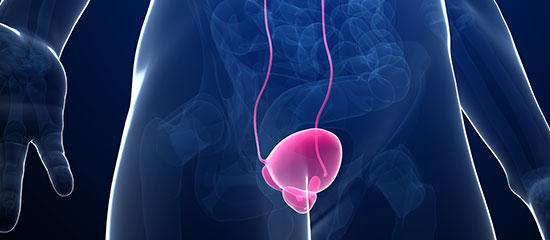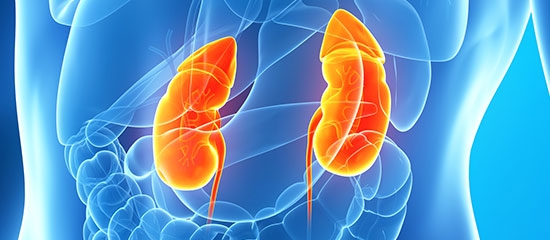cancer clinic
Cancer Immunity Clinic

01
Prostate cancer
Prostate cancer is a malignant tumor that occurs in around prostate.
As this tumor grows, it may be spreaded in the prostate. Like other types of cancers, prostate cancer may be metastasized to the other vital organs, such as bones, lungs, etc. Prostate cancer at its early stages may cause no urological symptoms, but it may cause serious urological problems such as pressure on urethra, urinary obstruction, etc., as it cancer progresses.
Compared to other cancers, it usually metastasizes into the body's core parts, such as spine, pelvis, etc., and causes serious complications.
Prostate cancer is a malignant tumor different from prostatomegaly(prostate enlargement) which is caused by enlargement of prostate's transition zone. Prostate cancer is small and cause almost no symptom at its early stages. It is mostly diagnosed when PSA(prostate specific antigen) level in blood increases, when a hard node is found from digital-rectal examination, and when cancer cells are found from biopsy after assuming prostatomegaly. However, if prostate cancer has progressed significantly or prostatomegaly is accompanied with cancer, it may cause symtoms such as dysuria(troubling urinating), oliguria(frequent urination), hematuria(blood in urine), pain while urinating, weak flow, feeling uncomfortable while urinating, etc.
Prostate-specific antigen(PSA) is a kind of enzyme made by epithelial cells in the prostate, it is involved in thinning semen. Its normal cutoff point is 4 ng/ml, though there is differences depending on how it measured. Increase of PSA level is more helpful for detecting prostate cancer than digital-rectal examination, it is expecially more important for the patients who are expected to live more than 10 years. In USA, where prostate cancer is the most common in men, it is known that if PSA level is higher than 4 ng/ml, the chance of having prostate cancer is 25~30%, and if PSA is more than 10 ng/ml, the chance is about 50%(in Korea, the chances are lower). That is, as PSA level increases, the chance of having prostate cancer goes up. Based on this, men in the age over 50 are basically recommended to have PSA test once a year. However, it is difficult to differentiate local prostate cancer and prostatomegaly only with PSA level.

02
Bladder cancer
Bladder cancer develops mostly in the age of 60~70, and men has 3~4 times higher risk for it than women.
More than 90% of bladder cancer is transitional cell carcinoma, and it is most common in Korea among urogenital cancers.
The most important risk factor for bladder cancer is smoking, which is related to 50% of male patients and 31% of female patients. As the carcinogen absorbed into body while smoking are excreted in the urine, bladder cancer develops by constant exposure to this substances. Actually, the risk for bladder cancer of smoker is 4 times higher than that of non-smokers, the more and longer they smoke, the higher the possibility for cancer is. The second important risk factor is exposure to some carcinogen at workplace. Dyes, rubber, leather products, paints, organic chemicals are known as the risk factors, and cystolith(bladder stones) and chronic cystitis may cause bladder cancer.
The most common symptom of bladder cancer is hematuria and it is observed on most patients while some are observed only in urine test. Also, bladder irritation symptoms such as oliguria, urgent urination, bed wetting, etc. are frequently caused, however, it is not easy to differentiate from acute cystitis because these symptoms are observed in it as well. Therefore, if cystitis is not cured even after treatment, bladder cancer should be suspected and undergo thorough checkup. When bladder cancer has advanced, it may cause specific symptoms depending on where cancer has spread to, such as weight loss, pain in bones, lateral abdominal pain by hydronephrosis.

03
Kidney cancer
Kidney cancer develops usually in the age of 40~50, and men has 2 times higher risk for it than women. It is difficult to treat as its malignancy is higher than any other urological cancers.
The exact cause of kidney cancer is unknown, but it is more detected in smokers, and diuretics, hypertensive medications, painkillers, female hormonal medications, etc. are considered as the strong causes.
Also, some reports said that those who excessively intake animal fat and handle the leather products, cadmium, asbestos, organic chemicals are more likely to develop kidney cancer. In many cases, kidney cancer is difficult to be diagnose at its early stages because there are no symptoms, but recently the cases of being deteced during health checkups or consultations with physicians are increasing. As the chance of concurrence of hematuria, abdominal pain, and abdominal neoplasm (lump), three obvious symptoms of kidney cancer, is about 10%, it is difficult to be aware of cancer. Surgery to remove the affected part of the kidney is the best treatment so far. When surgery is not possible as cancer has already spread to other parts of the body, medications, immunotherapy, etc. are performed, but the curative effect are little. Usually radical nephrectomy is used depending on the progression of the cancer cells and how much it has spread, but when cancer is in its advanced stage, there is almost no effect even after removal of the kidney. Therefore, the early detection and treatment of cancer is the best way.

04
Renal pelvis or ureter cancer
The renal calyx, the renal pelvis, and the ureter which carry out urine made in the kidney, and the innermost mucosa of the bladder consist of the same type cells (urothelium). They all contact urine in common and cancers developed in these parts have very similar characteristics.
Renal pelvis cancer may develos all in the renal calyx, the renal pelvis, and infundibulum, and ureter cancer mostly develops in the lower part of ureter but sometimes in the middle and upper parts as well.
The risk factors for renal pelvis or ureter cancer is similar to bladder cancer; chronic infection of urothelium, urolithiasis, environmental factors such as viruses, smoking, drinking coffee, etc., dyes, and organic solvents which is used in the leather product factories.
The most common symptom of renal pelvis or ureter cancer is hematuria (blood in urine) like bladder cancer, but a long and thin blood clot means the lesion is in the renal pelvis or ureter rather than the bladder.
About 30% of patients have pain in the side or the abdomen, and it is because a blood clot formed from cancer or hematuria blocks the urinary track. Sometimes a mass may be felt in the side, it is either cancer itself is big or kidney is secondary swollen due to cancer (hydronephrosis). When it has spread, cancer may cause loss of appetite, weight loss, lethargy. The most common treatment is nephroureterectomy and the entire kidney, all of the ureter, and the tissue includes mucosa around ureteral opening are removed in this surgery. It may be open surgery, but sometimes endoscopic surgery instead in order to remove the cancer cells only. When ureter cancer develops in upper part, a part of ureter including cancer is removed and remained ureter is reconnected to the kidney. When it develops in lower part, the entire ureter is resected and the new ureter is planted in the bladder. After cancer has metastasized, the anti-cancer medication is administerd. Same as bladder cancer, stop smoking is important because one of the most important risk factors is smoking, and also avoiding excessive use of painkillers like Phenacetin helps prevent this cancer.

05
Testicular cancer
It is not clear what causes testicular cancer, but it is most linked to cryptorchidism ( the case when a testicle never descended normally, so it is not in the scrotum). The chance that cryptorchidism becomes malignant is about 7~10%, it is 14~20 times higher than men whose testicles descended normally.
Besides that, it is known that testitis, injury, endocrine disorders, testicular atrophy, chemical factors are related to the development of testicular cancer.
When testicular cancer develops, a hard mass is felt in one of the testicle. Most of cases, there is no pain and it grows slowly. Sometimes the treatment is delayed because patients have no regard due to painlessness and inadequate diagnosis is made even after patients are aware of it. It is important that patients recognize the symptom and get diagnosis early since the late treatment causes metastasis. About 10% of patients may have acute headaches due to bleeding within the testicles or infarction.
Other symptoms related to metastasis may appear and lumbago is the most common. There may also be coughing, dyspnea, loss of appetite, nausea, vomitting, pain in bones, leg edema, hydrocele (the accumulation of fluid in the perididymis of the scrotum), and rarely gynecomastia. Astesticular cancer is gradually spread to retroperitoneal lymph nodes, retroperitoneal lymphoidectomy is as important as testectomy. In the case of seminoma at its early stages, radical testectomy is performed with radiotherapy on retroperitoneum, most cases are cured well. Combined chemotherapy which administrates several different anti-cancer medications together is usually performed for testicular cancer at its late stages. Testicular cancer respond very well to anti-cancer medications, so it shows high rate of treatment success.



